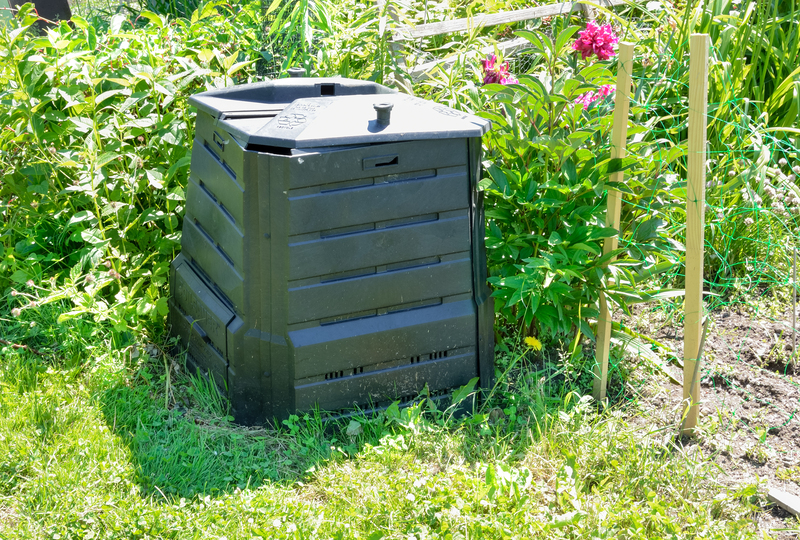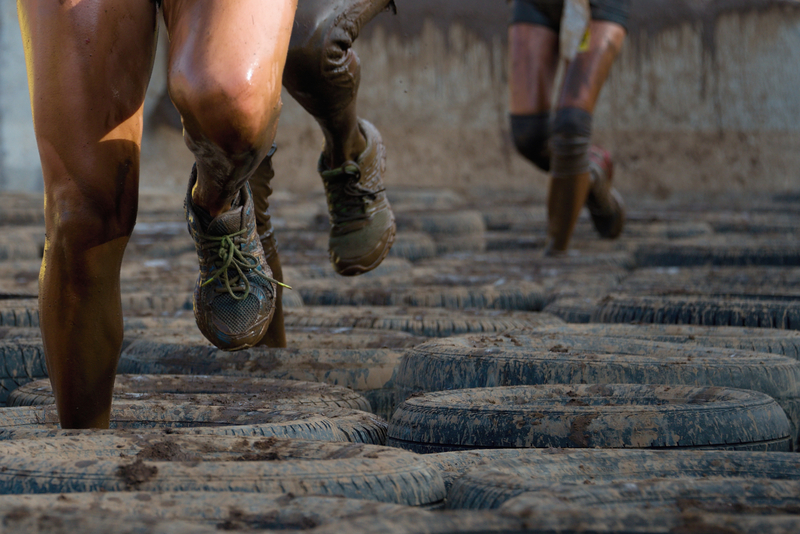Step-by-Step Solutions for Responsible PPE Waste Handling
The global pandemic has highlighted the vital role that Personal Protective Equipment (PPE) plays in ensuring the safety of healthcare workers, industry professionals, and the general public. However, the widespread use of masks, gloves, gowns, and face shields has also led to an environmental challenge: the proper handling and disposal of PPE waste. If not responsibly managed, PPE waste can pose health risks, pollute the environment, and overwhelm waste management systems. This comprehensive guide outlines step-by-step solutions for responsible PPE waste handling, ensuring safety while minimizing the environmental impact.

Understanding PPE Waste and Its Impact
Before delving into the actionable steps for PPE waste management, it is crucial to understand what PPE waste is and why responsible disposal matters.
What is PPE Waste?
- Personal Protective Equipment (PPE) waste includes used masks, gloves, gowns, face shields, and other protective gear designed to prevent infection or contamination.
- Most single-use PPE items are made from plastics such as polypropylene, making them non-biodegradable and environmentally persistent.
- PPE waste can accumulate in various settings, including healthcare facilities, households, public spaces, and industrial sites.
The Consequences of Improper PPE Disposal
- PPE litter causes environmental pollution in oceans, rivers, and landscapes.
- Improperly handled PPE can harbor pathogens, posing health risks to sanitation workers and the public.
- Traditional waste processing facilities may not be equipped to handle medical and infectious PPE waste, leading to contamination risks.
A proactive approach that considers the entire lifecycle of PPE--from usage to disposal--is essential for sustainable and safe waste management.
Key Principles for Responsible PPE Waste Handling
- Segregation: Always separate PPE waste from general household or office waste.
- Containment: Use secure bags or bins that are leak-proof and clearly labeled for PPE waste.
- Safe Disposal: Ensure that PPE is disposed of in designated locations following local guidelines.
- Decontamination: For non-clinical PPE that may be reused, ensure proper cleaning protocols are followed.
- Education: Inform employees, patients, and communities about correct PPE waste handling procedures.
Step-by-Step Process for Responsible PPE Waste Disposal
Let's explore, in detail, an effective method for managing PPE waste responsibly. Each step is designed to minimize health risks and environmental impacts.
1. Assess & Categorize PPE Waste
- Identify Types of PPE in Use: Whether masks, gloves, gowns, shields, or shoe covers, knowing what you're handling is essential for compliant disposal.
- Classify Waste as Infectious or Non-Infectious: Waste from hospitals, clinics, or contaminated zones is usually deemed infectious, requiring specialist disposal methods. PPE used in household or office settings may follow different protocols, depending on local regulations.
2. Segregate PPE Waste at the Source
Effective segregation at the place where PPE waste is generated is the first line of defense against contamination.
- Provide labeled, dedicated bins for PPE waste, particularly in healthcare, offices, and public spaces.
- Use color-coded bags (e.g., red or yellow) for easy identification and to signify hazardous or bio-infectious material.
- Do not mix PPE waste with recyclables or regular trash to prevent contamination.
3. Secure and Store Used PPE Properly
- Tightly seal any bags or containers holding used PPE to prevent spillage and exposure.
- Use bins with lids to keep waste secure from pests, weather, and accidental contact.
- For workplaces: Store PPE waste in a designated, ventilated area away from people, food preparation, and public traffic until it can be collected.
4. Handle and Transport PPE Waste Safely
- Train staff on how to safely move sealed PPE waste, using trolleys or carts when available.
- Always wear appropriate PPE (such as gloves and masks) when moving contaminated waste.
- Transport PPE waste directly to waste collection points to minimize additional handling.
5. Choose Environmentally Sound Disposal Methods
Responsible management goes beyond safe containment. Selection of proper disposal methods is key:
- Incineration: High-temperature incineration destroys pathogens and minimizes risk, but can cause air pollution if not properly managed.
- Autoclaving: Especially for medical waste, autoclaving uses heat/steam to sterilize PPE before landfill disposal.
- Engineered Landfill: Dispose of PPE waste in secure, authorized landfills designed for hazardous and medical waste.
- Emerging Technologies: Explore chemical disinfection, plasma pyrolysis, and other modern waste treatment options where available.
6. Recordkeeping and Compliance
Maintain thorough records of PPE waste generation and disposal, particularly for organizations and healthcare facilities. This step aids in regulatory compliance and ensures traceability.
- Log the amounts, types, and destinations of PPE waste.
- Maintain receipts and documentation from waste disposal services.
- Report to regulatory bodies as required by national or local laws.
7. Community Education and Awareness
Responsible PPE waste handling is a societal effort. Ongoing education ensures compliance at all levels:
- Display visible instructions near waste bins and PPE stations.
- Conduct training sessions for staff and public, reiterating the dangers of improper PPE disposal.
- Distribute educational materials, posters, and online resources emphasizing the environmental and health risks of PPE waste.
PPE Waste Management in Different Environments
Responsible PPE waste handling solutions vary by setting. Here's how to adapt these steps across different environments:
Healthcare Facilities
- Strict protocols must be followed for infectious PPE waste.
- Medical waste contractors should be engaged for routine collection and disposal.
- Staff must be regularly trained in updated waste handling protocols.
Workplaces & Public Spaces
- Install dedicated PPE disposal bins at strategic locations.
- Regularly empty and sanitize PPE waste stations.
- Promote a culture of responsibility by rewarding proper waste disposal behaviors.
Households and Personal Use
- Follow local guidelines for PPE waste disposal; many regions recommend double-bagging masks and gloves before placing them in general waste.
- Never litter used PPE in the environment--instead, store it securely for municipal collection.
- Consider reusable masks when appropriate (wash regularly).
Eco-Friendly PPE Waste Handling Solutions
Minimizing the environmental impact of PPE waste is more crucial than ever. Below are sustainable alternatives and solutions for reducing your PPE waste footprint.
1. Switch to Reusable PPE Where Safe
- Adopt washable, reusable masks and protective gear when risk assessment allows.
- Regularly launder reusable PPE according to safety standards.
2. Participate in PPE Recycling Initiatives
- Research local programs that accept PPE for recycling (many cater specifically to masks and gloves).
- Support manufacturers offering take-back or recycling programs for their PPE products.
- Advocate for expanded PPE recycling infrastructure in your community.
3. Support Biodegradable and Innovatively Designed PPE
- Choose biodegradable PPE products when available to reduce plastic waste.
- Encourage suppliers and employers to source more sustainable PPE options.
- Stay updated on advances in eco-friendly PPE design, such as compostable masks and gloves.
Legal and Ethical Considerations
- Be aware of legal requirements regarding PPE waste handling in your country or region.
- Failure to comply with correct PPE disposal methods may result in fines or legal actions, especially for institutions.
- There is an ethical obligation to protect public health and the planet through responsible PPE waste management.

Frequently Asked Questions (FAQs) About PPE Waste Solutions
- Can used PPE be recycled? Most single-use PPE is not currently recyclable through standard systems due to contamination, but specialized recycling initiatives are emerging in some regions.
- How should I dispose of PPE at home? Double-bag and seal, then place in general waste unless local authorities provide alternative instructions.
- What happens if PPE is littered? Improperly discarded PPE pollutes communities, harms wildlife, and may spread disease.
- Are there alternatives to disposable PPE? Yes, consider reusable masks and gear when suitable, and support innovations in biodegradable materials.
Conclusion: Everyone Has a Role in Responsible PPE Waste Management
Responsible PPE waste handling is not only about protecting frontline workers and the public from infection but also about safeguarding our world from environmental harm. By strictly following these step-by-step solutions for PPE waste disposal, individuals, businesses, and communities can minimize risks and contribute to a more sustainable future. Implement best practices, educate others, advocate for better systems, and always choose the most environmentally friendly PPE options available.
Together, we can ensure that PPE keeps us safe, without jeopardizing the health of our environment.